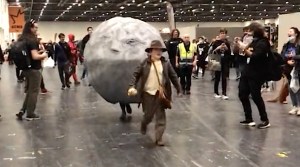An informative episode of Cheddar Explains talks about the dichotomous history of popcorn at the movie theaters. When silent films came out, the theater managers banned popcorn because the noise and the smell would distract moviegoers from keeping up with the plot.
Once talkies came about, popcorn vendors would sell their wares outside the theater causing management to forbid people from bringing any outside food into the theater. In the late 1920s and early 1930s, going to the theater was a formal event that forbade any type of snack, especially popcorn.
During the Great Depression, however, movie theaters began losing money and many failed. Seeing how popular popcorn was with outside vendors, the theater managers reluctantly allowed popcorn to be sold inside. Because corn was cheap, very available during World War II and could be popped on site, the management realized that they would be able to keep more of a patron’s money from a popcorn transaction than from a ticket sale. The rest is history.
As popcorn’s wealth circulated, theaters realized they needed to sell concessions without the street vendors as the middleman. The theaters are selling popcorn, candy, and soda. Things are going great until World War II came around and the United States entered a sugar shortage. Sugar exporters were cut off from America, and we needed to ration the sugar we had. That meant no candy and no soda. They needed to rely solely on popcorn for concession sales and by the end of the war, that was it for America. Popcorn was the official movie theater snack.






